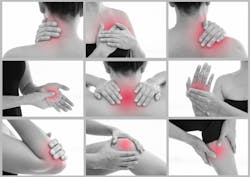A study from the National Institutes of Health shows that new cases of chronic pain occur more often among U.S. adults than new cases of several other common conditions, including diabetes, depression, and high blood pressure.
Among people who have chronic pain, almost two-thirds still suffer from it a year later. These findings come from a new analysis of National Health Interview Survey (NHIS) data by investigators from the National Center for Complementary and Integrative Health (NCCIH) at the NIH, Seattle Children’s Research Institute, and University of Washington, Seattle, and are published in JAMA Network Open.
Overall, the study found that the rate of chronic pain and high-impact chronic pain (HICP) among adults is approximately 21% and 8%, respectively. Chronic pain is pain that is experienced on most days or every day in the past three months; and HICP is pain that limits life or work activities on most days or every day during the past three months.
The study assessed reports of pain among survey participants and compared their experiences in 2020 to their baseline status in 2019. The study offers several key findings:
- The incidence of new chronic pain cases was high, at 52.4 cases per 1,000 persons per year. This is compared to other common chronic conditions, such as diabetes (7.1 cases/1,000 per year), depression (15.9 cases/ 1,000 per year), and hypertension (45.3 cases/1,000 per year).
- Among those who had reported non-chronic pain in 2019, about 1 in 6 (14.9%) said they had chronic pain in 2020, pointing to the importance of early management of pain.
- Chronic pain is highly persistent, with almost two-thirds (61.4%) of those who reported chronic pain in 2019 still reporting chronic pain a year later. Chronic pain developed into HICP at a rate of 190 cases/1,000 per year, and 361 cases/1,000 per year of people who had initially reported HICP were still suffering a year later.
- About 1 in 10 (10.4%) of people with chronic pain in 2019 recovered and were pain free in 2020.

